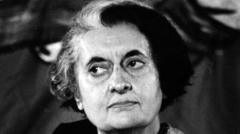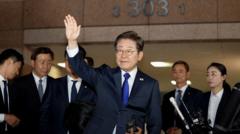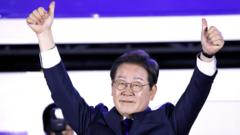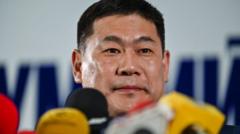As the dust settled from the tumultuous years of the mid-1970s, a less explored narrative emerges detailing India's near-shift to a presidential form of government amidst a climate of authoritarianism and centralization under Prime Minister Indira Gandhi.
**Unveiling India's Presidential Aspirations During the Emergency**

**Unveiling India's Presidential Aspirations During the Emergency**
In a retrospective examination, historian Srinath Raghavan highlights India's flirtation with a presidential system during Gandhi's Emergency rule.
During the imposition of the Emergency in the mid-1970s, which saw civil liberties curtailed and opposition leaders imprisoned, India faced a period that historian Srinath Raghavan describes as an unconventional reevaluation of governance. In his thought-provoking book, "Indira Gandhi and the Years That Transformed India," Raghavan illuminates how Gandhi’s administration explored a shift towards a presidential system—a drastic departure from India’s established parliamentary governance.
This exploration, invigorated by advisers such as BK Nehru, envisioned a centralized state that could bypass the limitations posed by traditional democratic processes. Nehru's influential letter in September 1975 heralded the Emergency as a pivotal opportunity to reshape political structures. Citing the need for a presidency that operated free from the demands of a diverse legislature, Nehru argued for a system that could enact "unpleasant but necessary decisions" for national interests, drawing inspiration from Charles de Gaulle's governance in France.
The envisioned reforms included a suggested seven-year presidential term, the adoption of proportional representation, as well as diminished judicial authority and press freedoms. Pushing for these radical changes, Nehru pressed Gandhi to act decisively while her party held a two-thirds majority in Parliament.
Gandhi's inner circle responded positively but cautiously. Despite the enthusiasm among senior leaders, the potential move towards a more authoritarian framework underscored rifts within the party as Gandhi remained hesitant to wholly endorse these proposals. Following a series of clandestine meetings, a document that laid out these sweeping amendments was drafted and circulated among trusted aides, pushing for even greater executive power than seen in the U.S. model.
While 1976's Forty-second Amendment did not create a presidential system, it left an indelible mark on India's governance by amplifying parliamentary power and diminishing the judiciary, hinting at the radical shifts under consideration. Critics voiced concerns about the alteration of constitutional balances, warning against the implications for democracy.
As Congress leaders openly called for lifelong power for Gandhi, she faced pressure to solidify her position. Controversially, the amendment garnered swift passage, yet the democratic landscape shifted again with the Janata Party's temporary rise and subsequent reforms that reversed many of the earlier changes.
In a twist of fate, Gandhi contemplated assuming the presidency herself in 1982, before ultimately appointing her ally Zail Singh instead. This once again highlighted the complexity of her political calculus; she remained wary of a significant shift in governance amidst fluctuating public support and intra-party dynamics.
Despite numerous proposals and discussions around the idea, India's presidential aspirations never fully materialized into action. The dual forces of Gandhi's tactical restraint and the enduring preference for parliamentary democracy shaped the political landscape in ways that kept India on its established path.
In a nation rife with political complexities, the legacy of this pivotal period reminds contemporary discussions of governance about the delicate balance between power and accountability. As late as 1984, calls for a presidential system echoed, but with Gandhi's assassination, the dialogue fell silent, confirming the steadfastness of India's parliamentary identity.






















